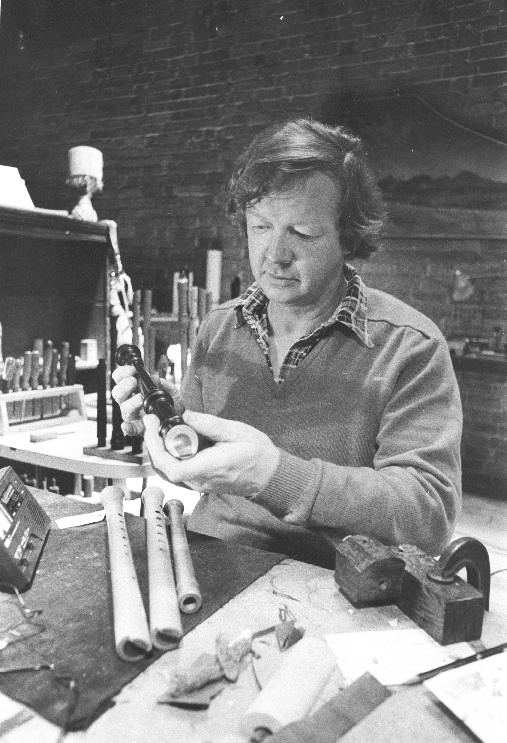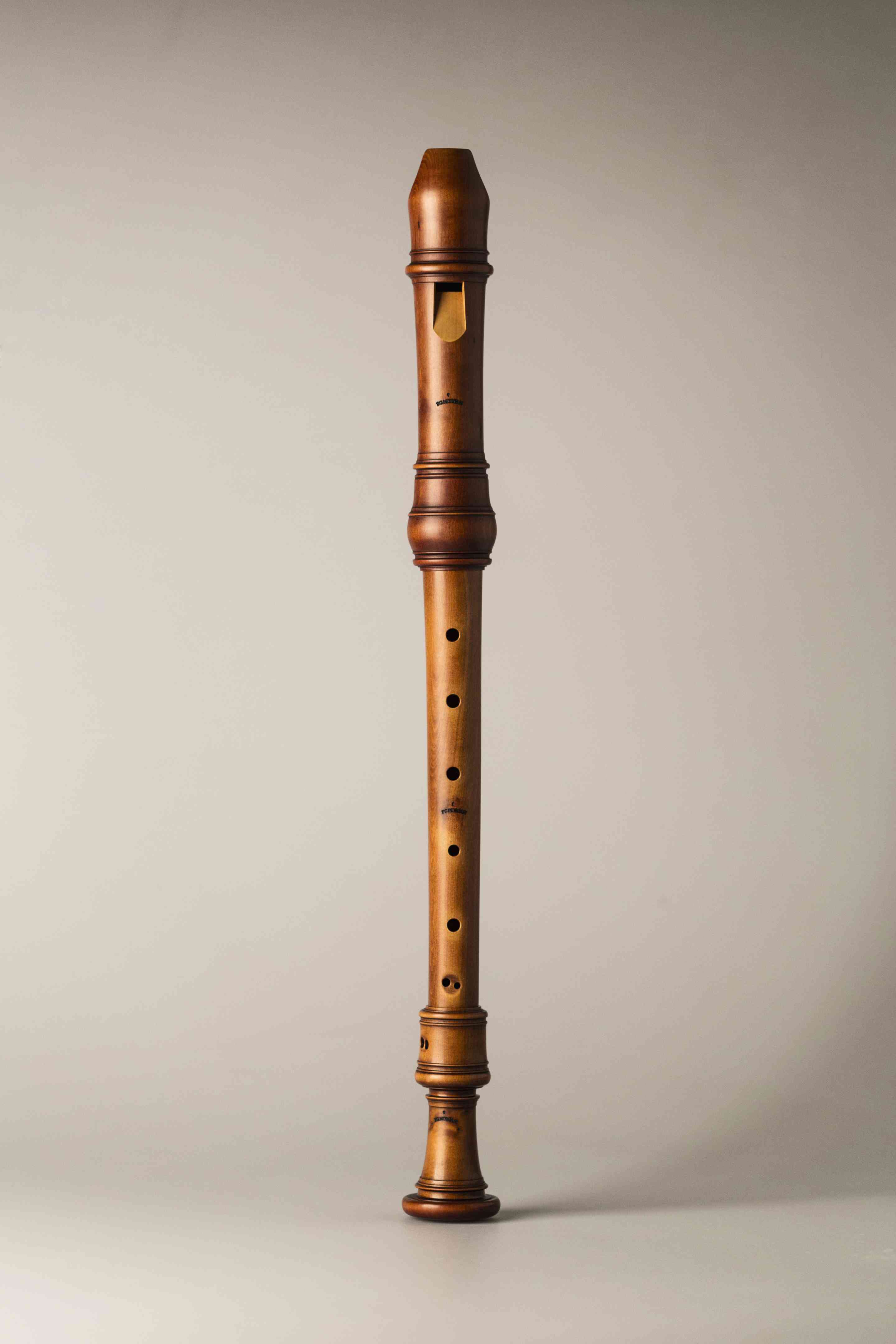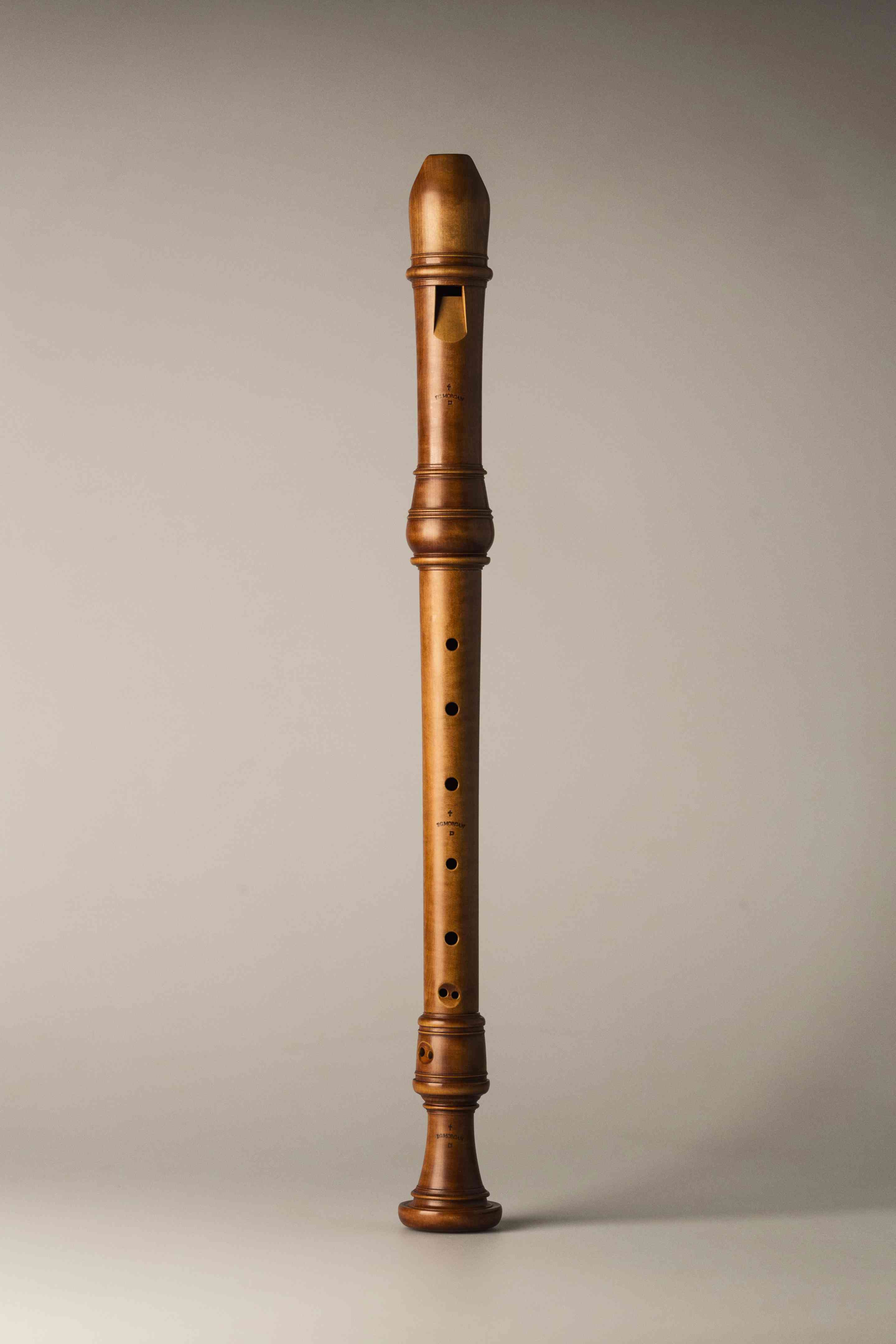My Fred Morgan Story
Like so many recorder players, I’ve always admired Fred Morgan’s instruments but, unfortunately, I was never able to acquire one of his recorders before his untimely passing in 1999. Two things impeded it: first, I was only 21 years old back in 1999 and had only the economic means of a young student who was trying to survive in the Netherlands, where I was studying at the time. Second, although I always did my best to collect the money, it was necessarily a slow process, which coupled with the fact that I only once managed to get an answer to my letters from the busy Fred —and that was only when I discovered that mentioning my famous Dutch teachers Jeanette van Wingerden and Marion Verbruggen would do the trick—, delayed the whole process until it was too late.

At that time, I was lucky enough to try out some of Fred’s instruments (I still remember an incredible Ganassi g alto made of ivory that I briefly tried out in a friend’s toilet in The Hague— thanks Beto!). I’ve always felt a greater affinity to earlier repertories than to Baroque music, but I’m sure the lack of Baroque instruments that fully satisfied me also played a significant role. That’s why I’ve been playing, touring and recording exclusively with Renaissance recorders in my professional projects, mainly by recorder maker Bob Marvin, which I’ve always loved and which have always given me more than the necessary inspiration to pursue good projects and hard work.
Debey
In 2009, I heard about a used Morgan Debey from someone in the USA. I took the risk and bought it without even trying it (and paid a crazy sum for it). Fortunately, everything went well and I was happy with the instrument. But as I was used to the full blowing level required by the huge bores of the Renaissance recorders, I couldn’t get used to the old, delicate Debey right away and continued to concentrate on earlier models for a long time – although I kept the old Debey as a valuable treasure, of course. Here it is:

Meyer
Later in 2009, I came across the instruments of the Swiss recorder maker genius Ernst Meyer, which surprised me because they fit my playing (mainly used to Renaissance recorders) very well, due to their wide voicing measurements and proportions. It was the first time that modern copies of baroque recorders really inspired me – and they still do: I love Ernst’s work and can’t wait to do a recording project with his instruments.
Bressan
But again in 2012, an unexpected event changed my mind about modern copies of baroque recorders: a Spanish colleague, player and teacher decided to start a new career and consequently put his recorder collection up for sale. Even though he again asked for a crazy amount of money, I thought it was my first real chance to finally get some instruments by Fred, and I decided to go for it. Since it was a really high amount that would force me to ask for a substantial bank loan, I tried to convince my colleague to get just the Bressan alto, but he insisted on selling his three Morgan recorders together, and I finally agreed, thinking that I could always sell the other two instruments later if I needed to (the others were instruments I thought I wouldn’t really need that often, such as a Stanesby soprano and a Ganassi g alto, always useful to me, but I had just received the Morgan/Ronimus version of the same instrument only a few months earlier). Here’s the Bressan:

Today
Three years later, I’m still paying for them, but it’s clear to me that I don’t want to sell any of them, and I certainly have professional plans for them. These three instruments still inspire me every day, and my appreciation for them is still growing in an ongoing process of being deeply impressed by the qualities of Fred Morgan’s instruments. Since I got them, I’ve given my first professional Baroque recital ever (I mean as a personal project, not just as a collaborator in someone else’s project) —in a career of about 20 years— in 2013, which I of course dedicated to Fred. I wrote a bit about his ‘playing in’ process for new instruments, which I really admire. His work as a maker has raised so much my awareness and appreciation of the great job being done by today’s finest recorder makers to such an extent that I also dedicated a program to four of them, including Fred, of course. I’ve finally come to really appreciate the old Debey; and I’m now planning to publish here some practical information about his work, including the list of instruments and their descriptions as they appeared in his catalogue, to make it publicly available as the historical document that they represent.
Ronimus
Last but not least, none of this would have been possible without the extraordinary help of the Danish recorder player, teacher and maker Nikolaj Ronimus, whose expert knowledge of Fred’s recorders and voicing techniques has enabled me to enjoy Fred’s instruments to the full – I’d like to express my heartfelt thanks to him here.
And of course, my Fred Morgan story doesn’t end here. It’s happening right now, every day in my daily practice sessions and every time I use them in concerts. ¡Viva Fred!
-
Update (May 12, 2015): To my surprise, Ann Morgan let me know that I published this piece on what would have been Fred’s 75th birthday (see this link). What a coincidence!
- Update 2 (December 24, 2016): Published a new, related article: The Fred Morgan Recorder Catalogue.